TRACING THE PATH
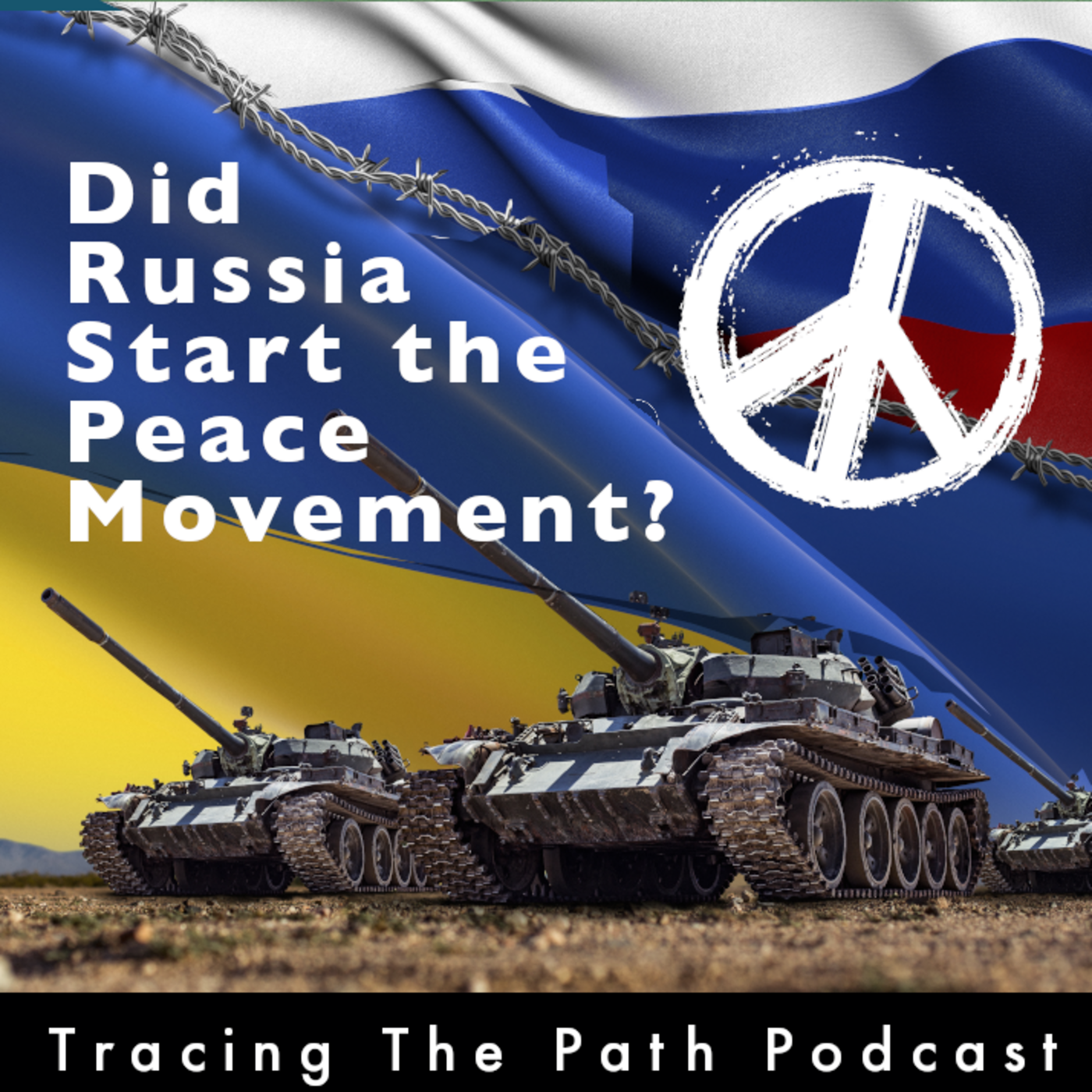
Did Russia Start the Peace Movement?
This episode traces the multifaceted pursuit of peace through key historical events, technological advancements, and influential figures. It begins by examining ancient symbols of peace and early communication systems like the Lighthouse of Alexandria and semaphore, setting a foundation for how humanity has sought connection and understanding.
The narrative then transitions to Alfred Nobel’s complex legacy, highlighting how his invention of dynamite, intended as a deterrent to war, ironically led to the establishment of the Nobel Peace Prize. The episode further explores the dawn of atomic power through the work of Marie Curie and others, demonstrating humanity’s capacity for both destructive and transformative innovation. Finally, it delves into the Cold War era, the genesis of the iconic peace sign, and the global efforts for nuclear disarmament, culminating in Samantha Smith’s impactful correspondence with Yuri Andropov, underscoring the enduring quest for global harmony in the face of escalating threats.
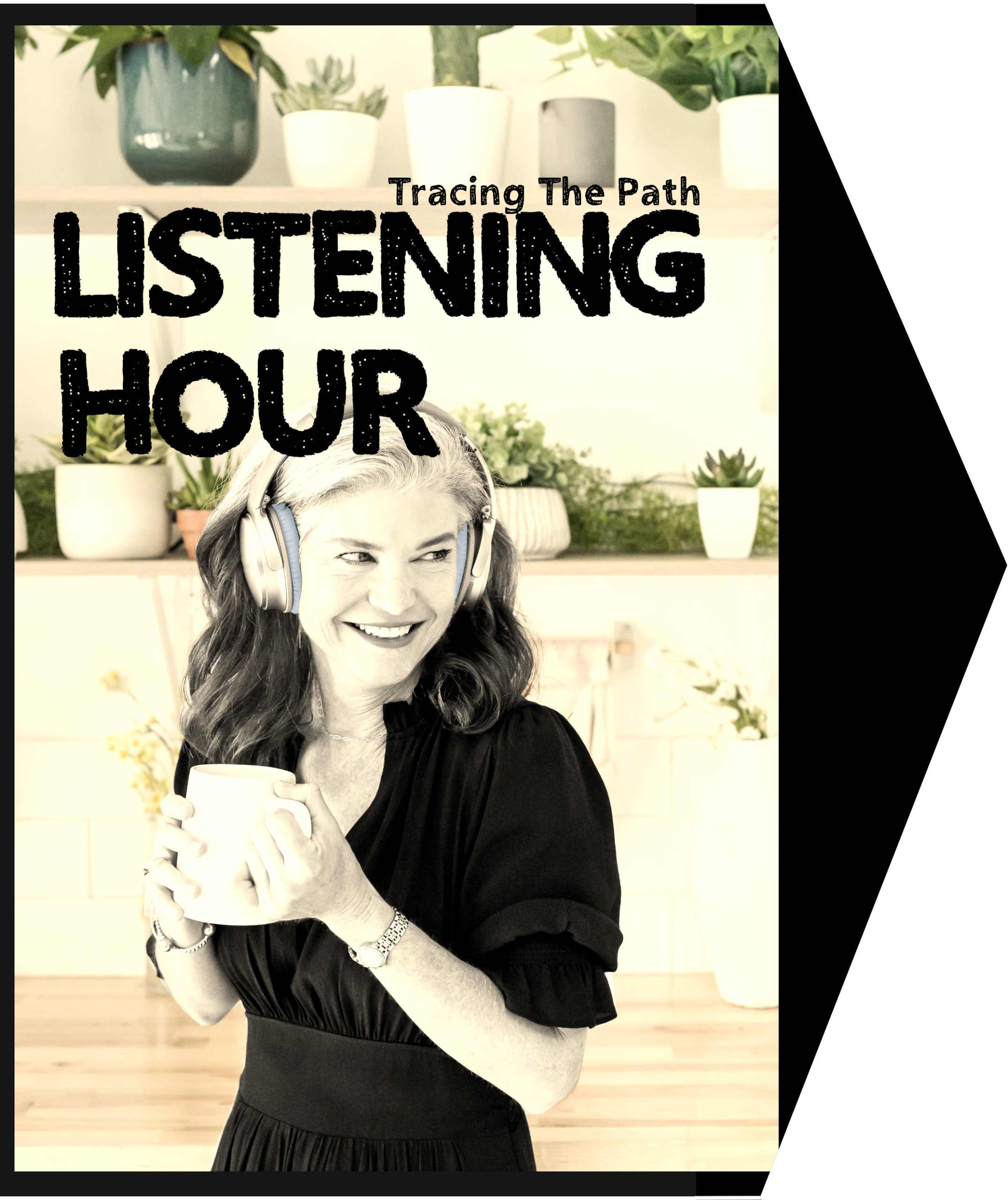
Audio Hour:
If you run an activity group, classroom or “audio book club”, click here for more information on using Tracing The Path.
- How did the Lighthouse of Alexandria influence communication systems throughout history?
- Explain the significance of Alfred Nobel’s invention of dynamite and his subsequent decision to establish the Nobel Prizes.
- What was Marie Curie’s key contribution to science, and how did it relate to later developments in warfare?
- How did H.G. Wells’s fictional works influence the scientific community’s understanding of atomic power?
- Describe the circumstances that led to the creation of Picasso’s “Guernica” mural.
- What was the primary goal of the World Peace Council, and why did it eventually lose credibility?
- How was the modern “peace sign” designed, and what historical communication method influenced its creation?
- Explain the significance of Samantha Smith’s letter to Yuri Andropov during the Cold War.
- How did the Soviet Union and the United States engage in “cultural diplomacy” during the Cold War?
- What parallel does the text draw between Adolf Hitler’s actions and Vladimir Putin’s actions concerning territorial expansion and warfare?
- The Lighthouse of Alexandria, initially a symbol of the empire, was later adapted by the Byzantine Empire into a chain of 35 communication towers. This system involved lighting fires to quickly relay messages across long distances, laying the groundwork for later innovations in rapid communication.
- Alfred Nobel invented dynamite as a safer explosive, believing it would ultimately deter war by making conflict too destructive. However, after being mistakenly labeled “The Merchant of Death” by a newspaper, he was so distraught by this perceived legacy that he bequeathed 95% of his fortune to create the Nobel Prizes, intending to inspire peaceful and scientific advancements.
- Marie Curie, building on Henri Becquerel’s work, discovered two new radioactive elements: Polonium and Radium. Her discovery of Radium, a precursor to much larger explosions than dynamite, inadvertently laid foundational knowledge that would eventually contribute to the development of atomic weapons.
- H.G. Wells, an author fascinated by science, published “The World Set Free” in 1914, which envisioned a bomb dropped from a plane capable of leveling entire cities, powered by uranium. This fictional prediction, given Wells’s past accuracy, piqued the interest of scientists like Leo Szilard, who began to consider the real-world possibility of such an atomic chain reaction.
- Pablo Picasso was deeply affected by the bombing of Guernica, Spain, by German and Italian forces in 1937, which devastated the city and its civilians. Though he had previously avoided political statements, the atrocity compelled him to scrap his commissioned work for the 1938 Paris Exposition and instead create “Guernica” as a powerful artistic protest against the horrors of war.
- The World Peace Council, formed by Russia after WWII, aimed to promote peace and condemn nuclear technology, attracting many intellectuals and artists. However, it lost credibility by largely serving as a platform to criticize Western ideas, failing to condemn Russia’s own atomic bomb test in 1949, and especially after Russia threatened England with nuclear retaliation during the 1956 Suez Canal Crisis.
- The modern peace sign was designed by Gerald Holton for the Campaign for Nuclear Disarmament (CND). He combined the semaphore signals for the letters ‘N’ (Nuclear) and ‘D’ (Disarmament), which were derived from the arm positions of Claude Chapé’s semaphore system, itself an evolution of the fire signals from the Lighthouse of Alexandria.
- Samantha Smith, a ten-year-old American girl, wrote to Soviet General Secretary Yuri Andropov asking about the possibility of nuclear war and his intentions for peace. Andropov’s surprising, detailed, and reassuring reply, which invited her to visit the Soviet Union, became a notable moment of cultural diplomacy and eased Cold War tensions, demonstrating a potential for personal connection amidst geopolitical conflict.
- During the Cold War, both the Soviet Union and the United States used cultural exchanges to influence international opinion. The U.S. launched jazz tours through various regions and established the Peace Corps to send American volunteers abroad. The Soviet Union, through entities like the World Peace Council, invited figures to speak on issues like race relations in the U.S. to highlight perceived Western flaws.
- The text draws a direct parallel between Hitler’s aggressive territorial claims (Rhineland, Czechoslovakia, Poland) and Putin’s actions (Crimea, Donbas, invasion of Ukraine). Both leaders are depicted as seeking to reclaim lost territories and using similar brutal tactics, such as flattening cities and targeting civilians, with the belief that it will force the opposing side to surrender.
Throughout the episodes, every tune is somehow related to the topic. In the Twinkies episode, for instance, the discussion of the Brooklyn Tip-Tops Baseball team concludes with “Take Me Out To the Ballgame”.
How many do you recognize? And harder, how many can you name?
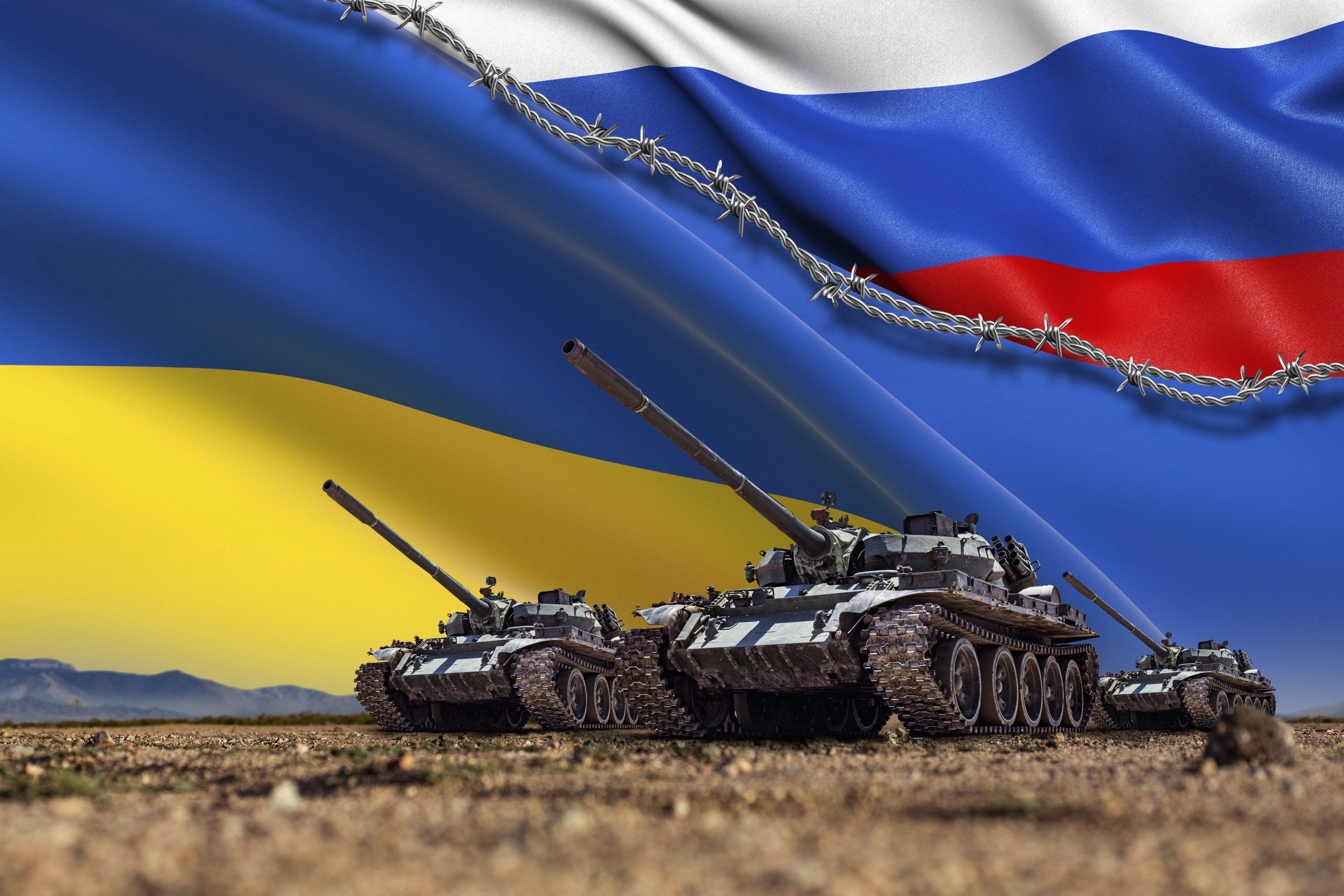
The Semaphore of Peace
According to the Book of Genesis in the Bible, it was a dove that returned to Noah carrying an olive ranch in its talons that signified the great flood was over, and a time of peace arrived again. Over time that dove, the olive branch, the crane, and peace-sign have all come to represent our desire for peace. As we are seeing in Ukraine, however, all come to represent our desire for peace.
Our story begins in 280 BC with the lighthouse of Alexandria. Started during the reign of Alexandria the Great, the lighthouse stood on the island of Ferros on the western edge of the Nile Delta. It is said to have been 350 feet tall, the only thing taller, being the Pyramids of Giza.
A spiral staircase led people to the top, where a great fire burned every night for ships to see. The lighthouse was a symbol of the empire, and being so massive, is now considered one of the seven ancient wonders of the world.
While an earthquake damaged it beyond repair in the 1300s, its importance can be seen in its depiction on the back of ancient Greek coins, to which the opposite side often showed the goddess of peace and an olive branch. In the ninth century, the Byzantine Empire thought the lighthouse would make a good communication tool. They built thirty-five of these lighthouse towers from Asia Minor to Constantinople. When invaders were observed, they would light a fire, to which the next tower would see, and they would light the fire, and so on and so on, a chain reaction of messages.
The alert could be passed 450 miles in under an hour. In 1792, Claude Chapé, a French clergyman, thought of a way to improve communication between the towers. By affixing wooden arms to the top of each tower, a coded message could be sent by arranging the arms in different patterns. The person in the next tower could see the pattern through a telescope and relay the message to the next tower. These patterns became known as semaphore.
One arm pointing up in a second point to the right might mean the letter A, for example. Perhaps two arms pointing straight up might mean danger. The only real problem with Claude’s creation was seeing the messages at night.
France adopted Claude’s system during the period of the Napoleonic Wars. Claude’s Semaphore system was largely retired with the advent of Morse code, but the navies of the world still use Semaphore today, communicating between boats and on runways with pilots.
Nobel’s Prize for Dynamite
In 1883, around the time Morse code was replacing Semaphore. The first hero of our story was born. Alfred Bernhard. Alfred was born in Stockholm, Sweden, to a father who was an inventor and a mother who was an accountant. By the time Alfred was four, his father’s company had actually gone bankrupt, and he left home to search for work abroad, where he found his opportunity in Russia. He had started a company that provided arms to Russia’s military.
Four years after he left, Alfred and his mother moved to St. Petersburg, Russia, where Alfred became fluent in Russian and four other languages. After graduation in 1852, Alfred went to work in the family business, just as the Crimean War began. Alfred’s family provided some of the arms Russia used in their quest to secure a warm water port on the Crimean Peninsula of the Black Sea.
While they ultimately lost that battle, they fought the Ottomans, the Crimean and the Ukrainians, and after which, Russia refused to pay their bills, so Alfred’s family business had to be shuttered.
Alfred’s family went back to Sweden, but Alfred chose to stay. He felt he was close to making a scientific breakthrough that could potentially change the face of war. Unfortunately, in 1864, one of his experiments went wrong and detonated unexpectedly. His younger brother, mule and three other people working with him died.
That led him to inventing a new, safer way to detonate the explosive. From that he invented the blasting cap, and a more controllable explosive, called “dynamite.” And though he knew the most practical use for dynamite was blasting rock, he also stated, “My dynamite will sooner lead to peace than 1,000 world conventions.” As soon as men find out that in one instant, whole armies can be utterly destroyed, they surely will abide by the golden peace.
Twenty-four years later in 1888, Alfred’s older brother Ludwig passed away. The local newspaper heard about it, but mistakenly thought it was Alfred, not Ludwig, who had passed away, and they published an article titled “The Merchant of Death is Dead.”
Alfred was crushed, that Russia’s brutal military exploits would be attributed to him. He was crushed that this would be his legacy. It was as if he was seeing his future in a real life Christmas Carol.
It was then he decided to use his vast fortune to shape a better world. He therefore started making plans so that when he died, he would bequeath 95% of his wealth to the creation of five annual prizes. The prizes would inspire people to do their best in the fields of chemistry, physics, medical science, literature, and peace. And the awards would be named after his family.
Alfred Bernhard Nobel.
Alfred died in 1896, and the first Nobel Prize, established by the man who invented dynamite, was awarded in 1901.
Marie’s Cure
That brings us to the next hero in our story. Maria was born in Poland, just at the end of the Crimean War, two parents who had been punished by Russia for being pro-Poland and taking part in the January Uprising of 1865.
Maria grew up with a passion for education and attended a clandestine patriotic Polish university that admitted women. After college, she got a job in a chemical laboratory in Krakow, which was run by her cousin. In 1891, she’d saved enough money to move to Paris, where she studied math and chemistry at the University of Paris.
In 1895, she decided to pursue a PhD and needed a thesis to work on. That year, scientist Wilhelm Raunkin, discovered X-rays, and French scientists Henri Becquerel, discovered that uranium emitted similar rays. Marie decided to research uranium rays for her doctorate.
Henry Beckerle invited Maria and her husband Pierre, also a chemist, to work with him. He had inherited a store of uranium from his father and could use the help. Through her research, she determined that an ore of uranium contained a radioactive substance. She also discovered two new elements from this decay of uranium.
The first she named after her homeland, Poland, Polonia. And secondly, she discovered the radioactive element, Radium, which would be a precursor to explosions much bigger than Nobel’s dynamite.
The credit for the discovery of radium would go to the name she used in France, not Maria, but Marie. Marie Curie.
Marie and Pierre Curie would become the most famous scientists in Europe, and they were in good company, working amongst Max Planck, Albert Einstein, Ernest Rutherford, and Frederick Saudy.
In 1913, Frederick Soddy published an essay called The Interpretation of Radium, which explained the energy released when uranium decayed to become radium. The new excitement about the potential power that could be created had the scientific community buzzing but what that could mean for future cities. But one of Europe’s most famous authors had a different application.
The H.G. Wells Connection
H.G. Wells was fascinated with science, always seemingly ahead of technology.
By 1913 he’d already written The War of the Worlds, where aliens had lasers, 47 years before the first film was ever made, and, in 1906 he published The War in the Air about the advent of military planes five years before the first one would even be used.
And World War I would prove well as his idea about military aircraft might. Since aircraft were relatively new in the First World War, the true power and devastation of military aircraft wouldn’t fully be understood until the Spanish Civil War in 1937.
There the German and Italian militaries joined forces with the revolutionary Nationalist Party in Spain to overthrow the Spanish government. On April 28, 1937, the headline of the French newspaper, Humanité, read.
“1,000 incendiary bombs dropped by Hitler and Mussolini planes reduced the city of Guernica Spain to ashes, an incalculable number of dead and wounded. For how long can the world tolerate the terrifying exploits of international fascism?”
Like H. G. Wells’ book predicted, the bombing of innocent civilians would be undertaken to force the other side to give up.
Living in Paris, far from his Spanish home, the famous artist Pablo Picasso was heartbroken and outraged reading this article. While he had never made a political statement prior to that, he felt compelled to do so now. He was currently commissioned by the Spanish government to produce a piece for the 1938 Paris Exposition.
Picasso scrapped it, and instead he painted the mural of Guernica, a tribute to the fallen people in horrors of war. Guernica would become his most famous piece of art.
Frederick Soddy’s essay on Radium gave Wells a new idea beyond military planes, beyond lasers. In the 1914, he published the World Set Free with a new idea that included a bomb that could be dropped from a plane and would level entire cities all powered by uranium.
Since H.G. Wells’ predictions seemed to come true, the scientific community was curious about this one.
Leo Szilard was another physicist working in the atomic community. He’d invented the electron microscope among other things. He read Wells’ prediction about an atomic bomb with keen interest. He had recently been at a talk in England, given by Ernest Rutherford, the scientist who discovered radioactive half-life, who was suggesting that H. G. Wells’ idea was impossible.
But Leo disagreed.
He felt it was entirely possible to find an atom that when split by a neutron would shoot off another neutron that could be aimed at another atom that could split that atom and create a chain reaction.
He discussed the idea with scientists Otto Hahn of Germany and Enrico Fermi of Italy, Albert Einstein, and Fredrik Jolie Curie, and came to the conclusion that uranium offered that actual possibility.
The Peace Bomb
As it was becoming clear that World War II was drawing close, Otto Hahn and other scientists in Europe fled to London. Leo Szilard and Albert Einstein worried that the other German and Italian scientists left behind might have the same idea about the atomic chain reaction. They might even be ahead, and felt it was time to alert the world that H.G. Wells’ book might be coming true.
So, Albert Einstein sent a letter to Roosevelt.
They wanted him to know there would be no peace if the aggressor had a bomb this size first. FDR took the note seriously and eventually assembled a team to produce the bomb before the other side could. The team was called the Manhattan Project. Unfortunately, FDR would die of a cerebral hemorrhage before the end of the war, before seeing this modern miracle of peace be completed.
He passed away on April 12, 1945, just three weeks before Hitler would surrender the war. Truman would not only inherit the world’s largest war, but also an atomic bomb.
60 days later on June 26, eager to end the war for good, the Allied Naval blockade of Japan, an intense bombing left the country devastated. Okinawa had been captured, and the U.S. called on Japan for its unconditional surrender.
But Japan did not. and the US called on Japan for its unconditional surrender. But Japan did not.
One month later, the first atomic bomb was tested and pronounced military-ready in New Mexico. Truman offered one more opportunity for Japan to surrender or face other devastation. Not understanding the power of one of these bombs, Japan did nothing. A
nd Truman gave the green light to use the bomb in hopes of Japan’s immediate surrender. And when that didn’t happen, another one was dropped. Over 120,000 people in Hiroshima, home of their second army headquarters, and Nagasaki, a military and manufacturing port, were killed by the bombs.
Japan surrendered.
The world could be at peace again. But the advent of the bomb gave rise to a new war.
Russia’s Peace Sign?
Europe and Japan needed to be rebuilt. In 1947, the US proposed a $15 billion reconstruction plan, the Marshall Plan, and invited Russia and the other allies to participate. Joseph Stalin of Russia had other ideas. He responded by creating the information bureau of the communist and workers parties and held a conference in Skarska, Poland. Bulgaria, Czechoslovakia, Hungary, Poland, Romania, and Yugoslavia attended.
Stalin created it to coordinate the actions of the European Communist parties and to repel the expansion of the anti-communists, effectively dividing the world into two.
The next year Russia created a new group. It was a world congress of intellectuals for peace that they called the World Peace Council.
After World War II, this message of pivoting toward peace was attractive to many. And since Russia wasn’t the destroyer of Guernica, the invader of Poland, or the creator of concentration camps, the World Peace Council seemed like it might be a good idea.
Scientists Frederick Jolie Curie, Marie Curie’s son-in-law, stepped up to be president the first year. Also, John Paul Sartre, the French author, Pablo Neruda, W.E.B. Du Bois, and Pablo Picasso became part of it. Pablo Picasso, now a political activist for peace, painted a dove, the international symbol of peace since the days of Noah’s Ark, for the World Peace Council.
And in 1949, they adopted it as their symbol.
The World Peace Council didn’t actually do anything other than host a big conference of a year. That did little more than bash the ideas of the West. Civil rights activists in the US like Paul Robeson were invited to speak on the evils of race relations in the US.
While it served to condemn any country developing nuclear technology, the World Peace Council had nothing to say after Russia’s first atomic bomb test in 1949. But it wasn’t until 1956 that the World Peace Council lost all credibility.
The Suez Canal Crisis. That’s when Egypt proceeded to take the Suez Canal for themselves, which caused a reaction by Israel. And Israel’s involvement led to the involvement of France and England. Then Russia, the country behind the World Peace Council, the country that condemned nuclear bombs, then threatened England with a nuclear response.
The Suez Canal Crisis was bringing Alfred Nobel’s words to light, but this time, instead of fearing dynamite, now it was the atomic bomb.
And now the world wasn’t safer, but 1,000 times more dangerous.
In November of 1957, J.B. Priestley, a renowned BBC television news personality, published in article in New Statesman Magazine, advocating for unilateral disarmament by all. The article garnered thousands of letters of support, which caused the editor of the New Statesman to launch a full campaign.
They would call it the campaign for nuclear disarmament, the CDN.
Their first big splash would be a march from London to Aldermann, UK’s Atomic Research Center.
Being a newspaper, they knew pictures would be published, and they needed their own disarmament symbol to be present among the pictures. A friend Gerald Holtom, artist and designer, was asked to make something. Delighted, Gerald started with a cross inside a circle. But people around him commented that it looked too religious. He tried combining the ‘n’ and the ‘d’ in nuclear disarmament together. But nothing.
Changing the angles of the lines in the cross proved unsuccessful as well. That’s when he decided to investigate the Navy’s semaphore language that originated with the lighthouse of Alexandria. To find out what armed positions created the letters n and d. The arms to make an n looked like the hands of a clock when it was 720. And the letter D looked like the hands of a clock when it was 1230 straight up and down. He put the two together and created the symbol the world knows today, not as the nuclear disarmament sign.
But the peace sign.
The Berlin Wall of Peace?
In the US, one of Martin Luther King’s closest friends and advisors was Bayard Rustin. Bayard Rustin was a huge activist in the nuclear disarmament cause, and was invited to be part of the Alderson March. His speech, many say, was the most powerful, and it detailed the success of the nonviolent bus boycott in Alabama and the struggle for eagle rights.
With Paul Robeson and Bayard Rustin and the rhetoric of the World Peace Council, airing America’s dirty laundry, President Eisenhower realized the U.S. needed a new approach to cultural diplomacy.
He saw the Cold War as a battle of ideas, the winner of which would decide the fate of the world, and he needed to make sure the Communist propaganda didn’t sway more people as the World Peace Council had.
Their first idea was to harness the power of America’s jazz music. Jazz was known to be entirely American and its stars had created quite a following. The State Department was put in charge of creating a tour through Eastern Europe, the Middle East, Southeast Asia, and Africa. Dizzy Gillespie, Louis Armstrong, Dave Brubek, Benny Goodman, Duke Ellington, and Quincy Jones were all recruited for the three-year tour.
Before John F. Kennedy became president, he wanted to do something even bigger with more reach. He wanted to make change the way the World Peace Council never had. With many of the third world countries gaining independence, he knew they would be vulnerable to communist influences.
And to help the sell his idea to the American people before actually launching it, he hinted at the role America was going to play in the world in his inauguration speech, where he famously asked, “Ask not what your country can do for you. Ask what you can do for your country.”
And so he launched the Peace Corps, a program to send regular Americans to third world countries to help wherever help was needed. Its 14,000 volunteers each year were first trained on how the American economy worked and what kinds of problems existed with communism. They were also asked to not get into debates with others, but instead to leave their mark through hard work and accomplishments.
But while the US was worried about the rhetoric coming out of the Soviet Union, the Soviet Union had its own problems. Wilhelm Ulbricht, the head of state for East Germany after World War II, had discovered a problem. Fifty percent of the refugees leaving East Germany for the West were skilled workers, engineers, scientists, teachers, and doctors, and he reported that 61 percent of the population that remained was working age citizens as compared to 71% before the war.
He contacted his liaison in Moscow for the communist and worker party states, Yuri Andropov. Andropov suggested that he close the border completely to the west and build a wall across Berlin. So in 1961 when America launched the Peace Corps, the eastern bulk of Europe was shut down.
But the calls for peace and nuclear disarmament hadn’t stopped, and the peace sign itself was quickly becoming an international phenomenon.
In the US, Bayard Rustin had brought the peace sign into the civil rights movement after his return from the Alderson March. And the war in Vietnam put peace front and center in America’s newspapers. Festivals like Woodstock and artists like Arlo Guthrie and Bob Dylan created a nonviolent peace-loving movement.
In 1971, the mood of the world was framed by John Lennon and Yoko Ono and their song Imagine. In South Africa, the peace sign was being used by Nelson Mandela and Stephen Biko in the Anti Apartheid movement. In fact, South African President, P.W. Botha, tried to ban it.
By 1981, Ronald Reagan had become president of the U.S. and Yuri Andropov had worked his way to becoming the General Secretary of the Soviet Union. Anti-nuclear protests were taking place all over the world, as the Cold War seemed to get more dangerous by the day.
The rise of Andropov didn’t help as he was previously head of the Russian KGB and known to be a brutal leader.
The Letter of Samantha Smith
In the little town of Manchester, Maine, a young girl in sixth grade wanted to know why relations between the US and the Soviet Union were so tense. So she decided to write Yuri Andropov a letter and ask him directly. It said,
“Dear Mr. Antropov, my name is Samantha Smith. I am ten years old. Congratulations on your new job. I have been worrying about Russia and the United States getting into a nuclear war. Are you going to vote to have a war or not? If you aren’t, please tell me how you are going to help to not have a war. This question you do not have to answer, but I would like to know why you want to conquer the world or at least our country. God made the world for us to live together in peace and not to fight, sincerely Samantha Smith.”
Surprisingly four months later Samantha Smith received a personal letter from Yuri Andropov himself.” It said,
“Dear Samantha, I received your letter, which is like many others that have reached me recently from your country and from other countries around the world. It seems to me I can tell by your letter that you are a courageous and honest girl, resembling Becky, the friend of Tom Sawyer in the famous book of your compatriot, Mark Twain. This book is well known and loved in our country by all boys and girls.
You write that you are anxious about whether there will be a nuclear war between our two countries, and you ask, are we doing anything so that war will not break out? Your question is the most important of those that every thinking man can pose. I will reply to you seriously and honestly. Yes, Samantha, we in the Soviet Union are trying to do everything so there will not be a war on Earth. This is what every Soviet man wants. This is what the great founder of our state, Vladimir Lenin, taught us.
Soviet people well know what a terrible thing war is. 42 years ago Nazi Germany, which strove for supremacy over the whole world, attacked our country, burned and destroyed many thousands of our towns and villages, killed millions of Soviet men, women, and children. In that war, which ended with our victory, we were in alliance with the United States. Together, we fought for the liberation of many people from the Nazi invaders. I hope that you know about this from your history lessons in school. And today we want very much to live in peace, to trade and cooperate with all our neighbors on this earth, with those far away and those nearby, and certainly with such a great country as the United States of America.
In America and in our country there are nuclear weapons, terrible weapons that can kill millions of people in an instant, but we do not want them to ever be used. That’s precisely why the so we eat solemnly declared throughout the entire world that never, never, will it use nuclear weapons first against any country. In general, we propose to discontinue further production of them and to proceed to the abolition of all stockpiles on earth. It seems to me that this is a sufficient answer to your second question.
Why do you want to wage war against the whole world or at least the United States? We want nothing of the kind. No one in our country, neither workers, peasants, writers, nor doctors, neither grown-ups nor children, nor members of the government, want either a big or a little war. We want peace. There is something that we are occupied with, growing wheat, building and inventing, writing books and flying into space. We want peace for ourselves and for all the peoples of the planet, for our children and for you,
Samantha. I invite you if your parents will let you to come to our country the best time being this summer. You will find out about our country meet with your contemporaries visit an international children’s camp or tech on the sea and see for yourself. In the Soviet Union everyone is for peace and friendship among peoples. Thank you for your letter. I wish you all the best in your young life, Yuri Andropov.”
That summer, Samantha Smith then visited Russia, where she toured Moscow, Leningrad and a youth camp in the Ukrainian town of Gersuf on the Crimean Peninsula.
In 1986, Gorbachev became the head of the Soviet Union, and with him new ideas. He wanted to open the borders to the west and restructure the economy. In 1989, this new openness between the Soviet Union and the west led South Africa to take a giant leap, being the first to dismantle their nuclear arsenal. And in Berlin, hundreds of thousands of Germans were present when the border was finally open. Thousands of students took to tearing down the Berlin Wall.
And one of the first things to be graffitied on the broken pieces of wall was the peace sign.
CUTTING ROOM FLOOR
To hear all the stories that hit the cutting room floor, you have to listen to the episode.
ABOUT THE SHOW
Let us tell you the story of the 20th Century, by tracing each event back to the original decisions that shaped it. You’ll quickly find out that everybody and everything is connected. If you thought you understood the 20th Century, you’re in for a treat.
Tracing the Path is inspired by storytellers like Paul Harvey, Charles Kuralt, and Andy Rooney.
INTERCONNECTED EPISODES
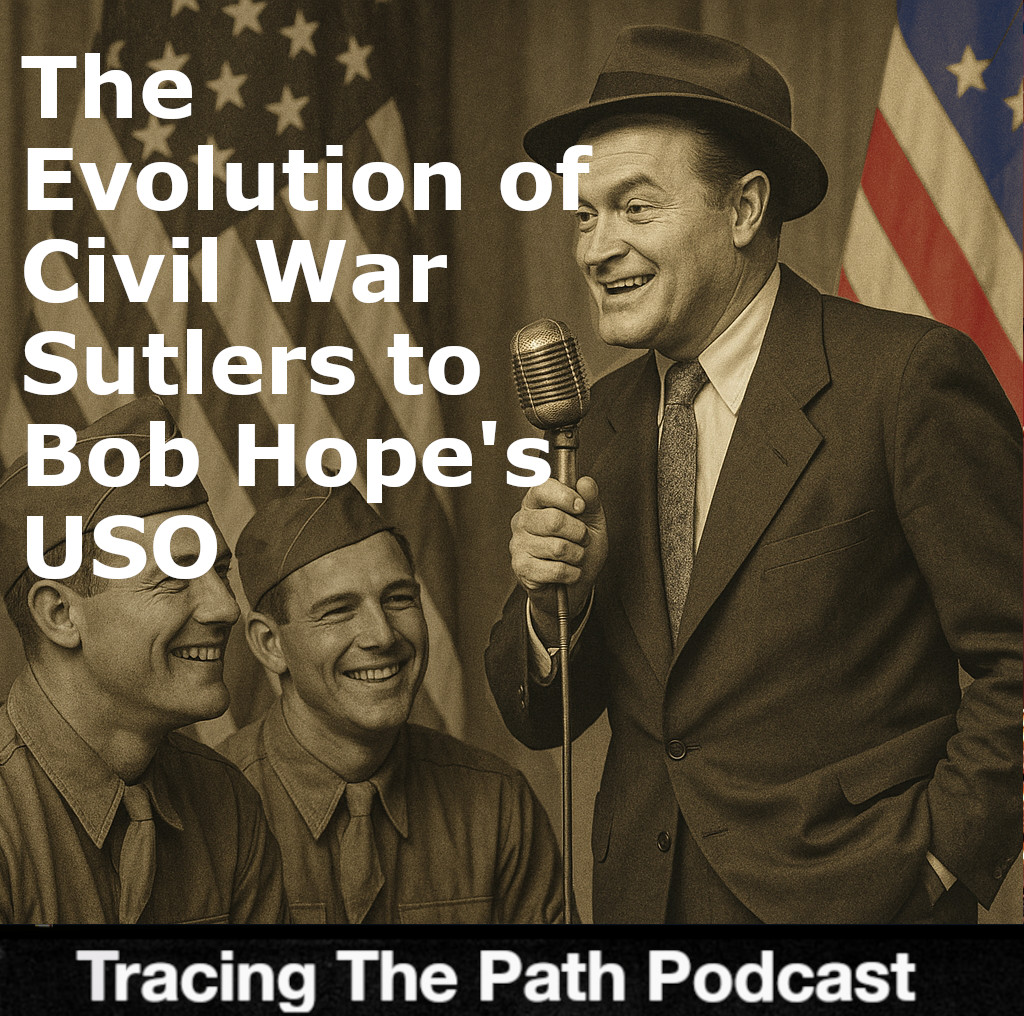 |
Evolving Civil War Sutlers into the Bob Hope’s USO Many factors went into the success of the USO. It wasn’t necessarily just big hearted celebrities |
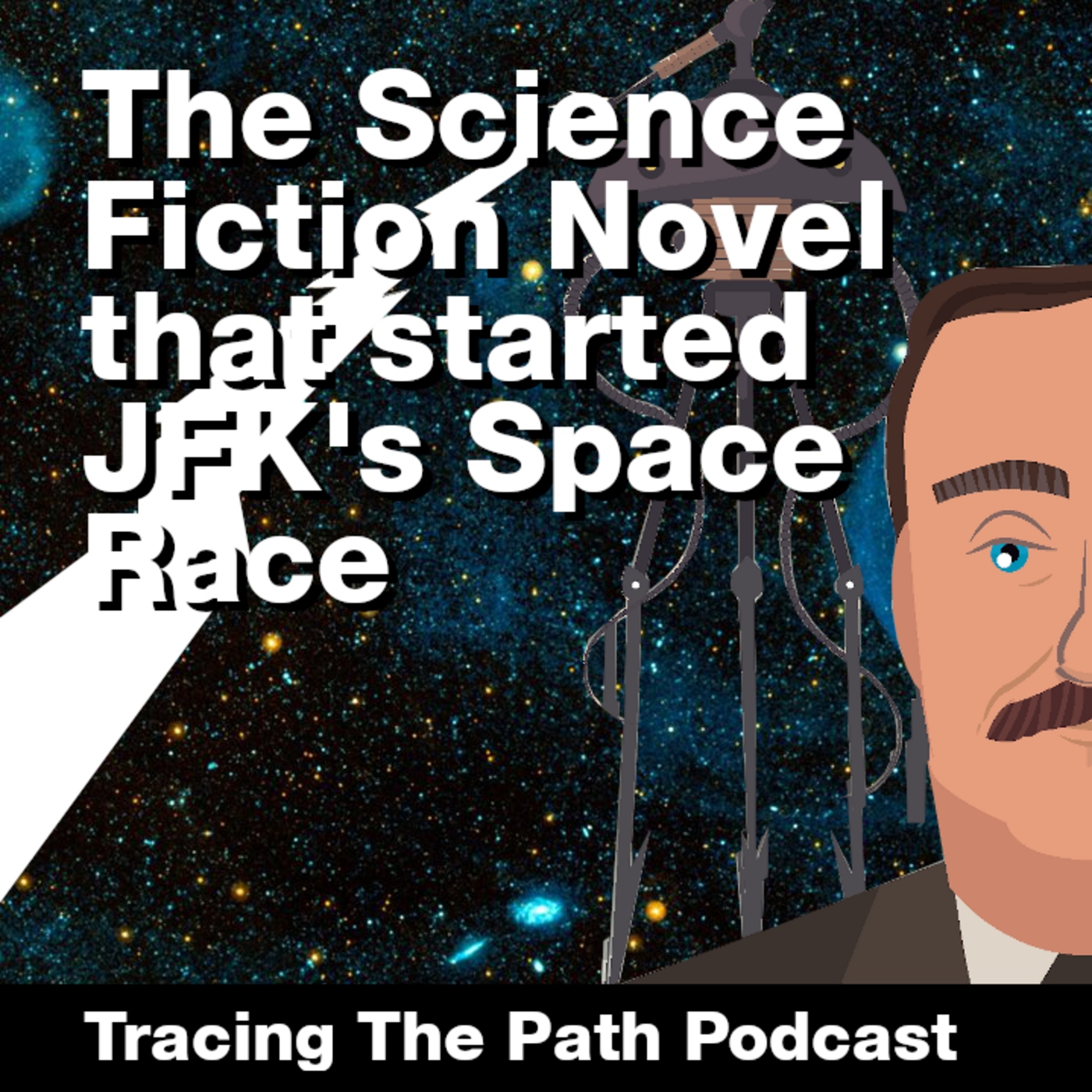 |
Who Started the Outer Space Race? Elon Musk isn’t the first person to have his eyes set on Mars. |
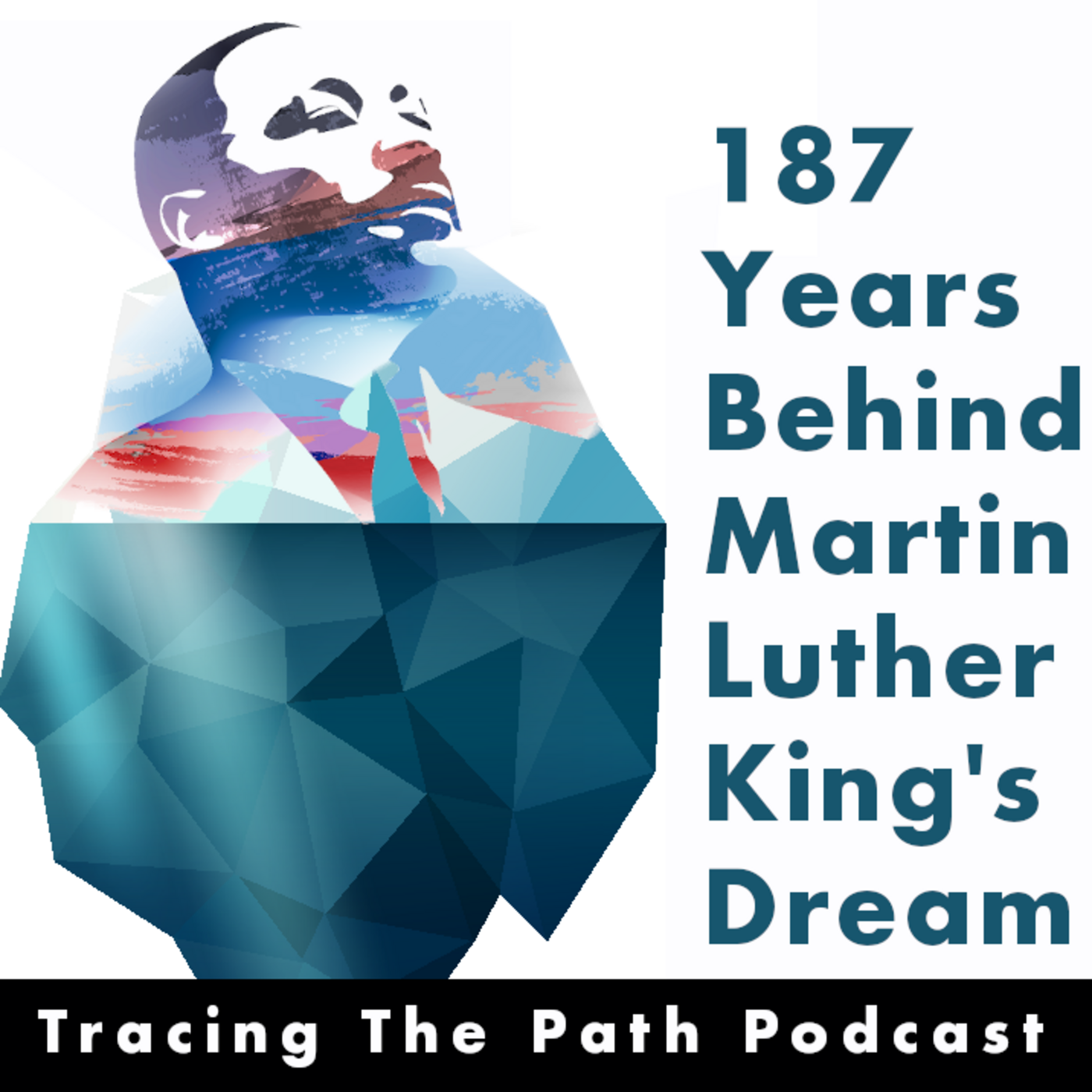 |
187 Years Behind Martin Luther Kind’s Dream We all learn about the “I Have a Dream” speech, but few know where it comes from. |
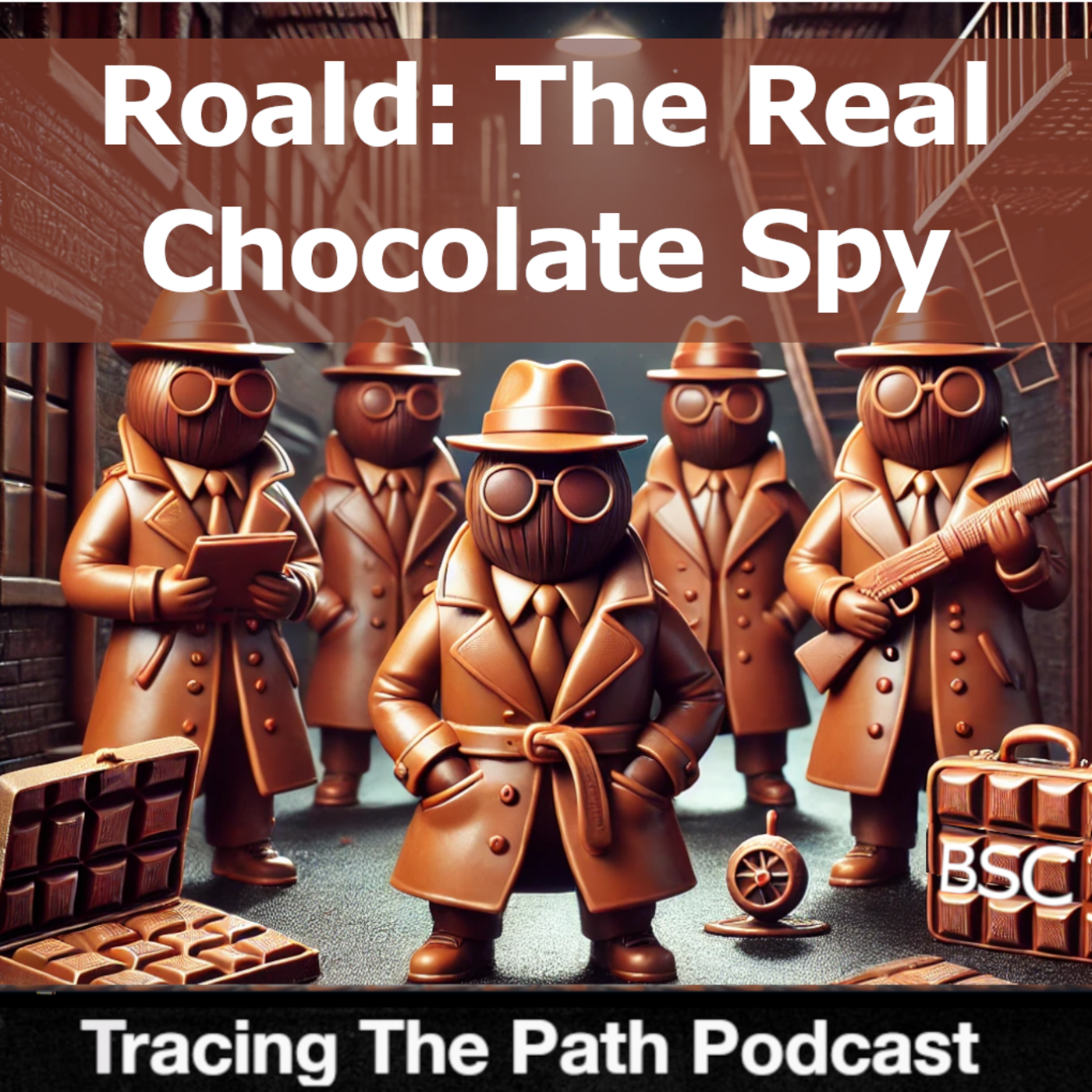 |
Roald Dahl: The Real Chocolate Spy You probably know about Charlie and the Chocolate Factory, Matilda and the Chitty Chitty Bang Bang . . . but you didn’t know this. |
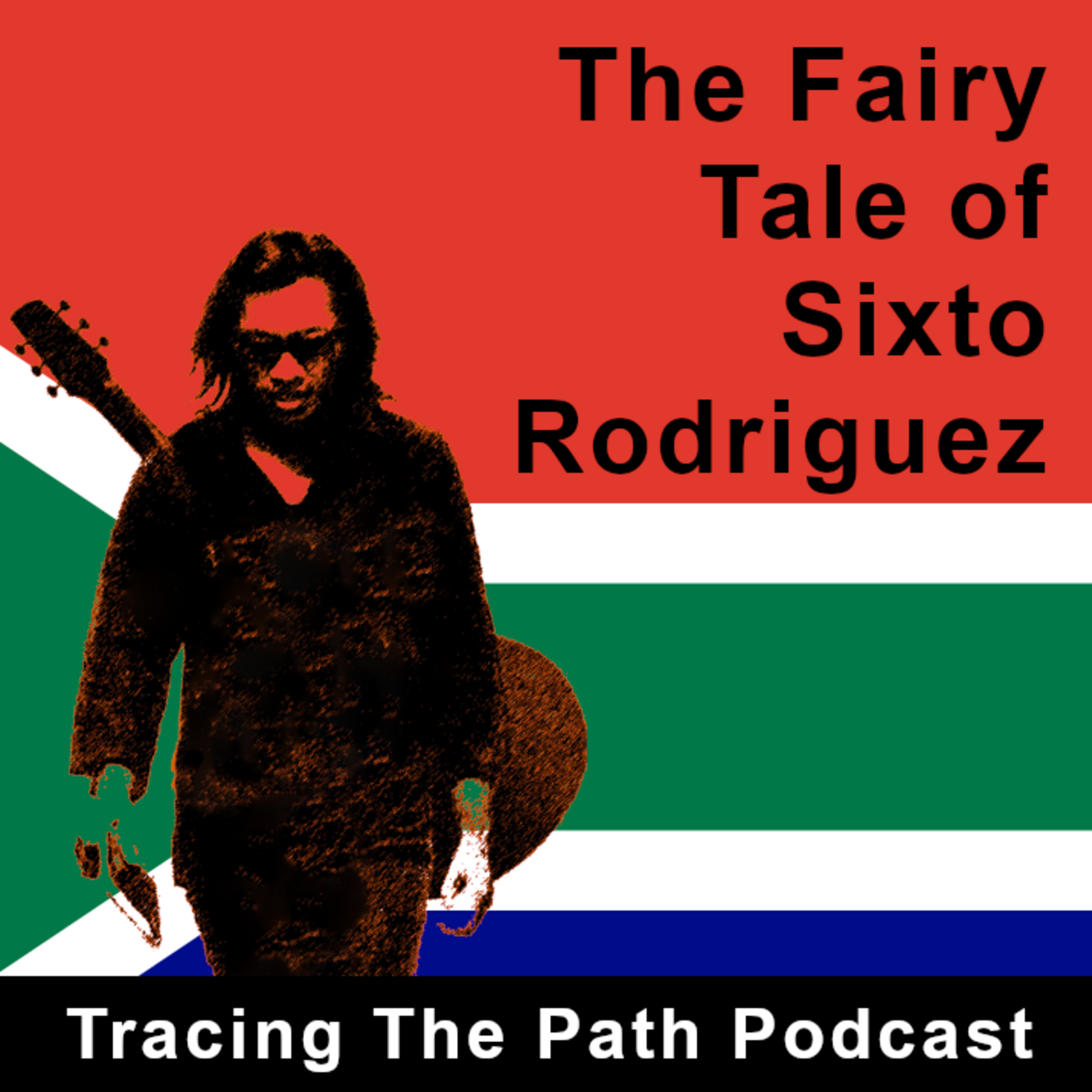 |
The Fairy Tale of Sixto Rodriguez Ever hear the story of the most famous musician in the world? Neither did he. |
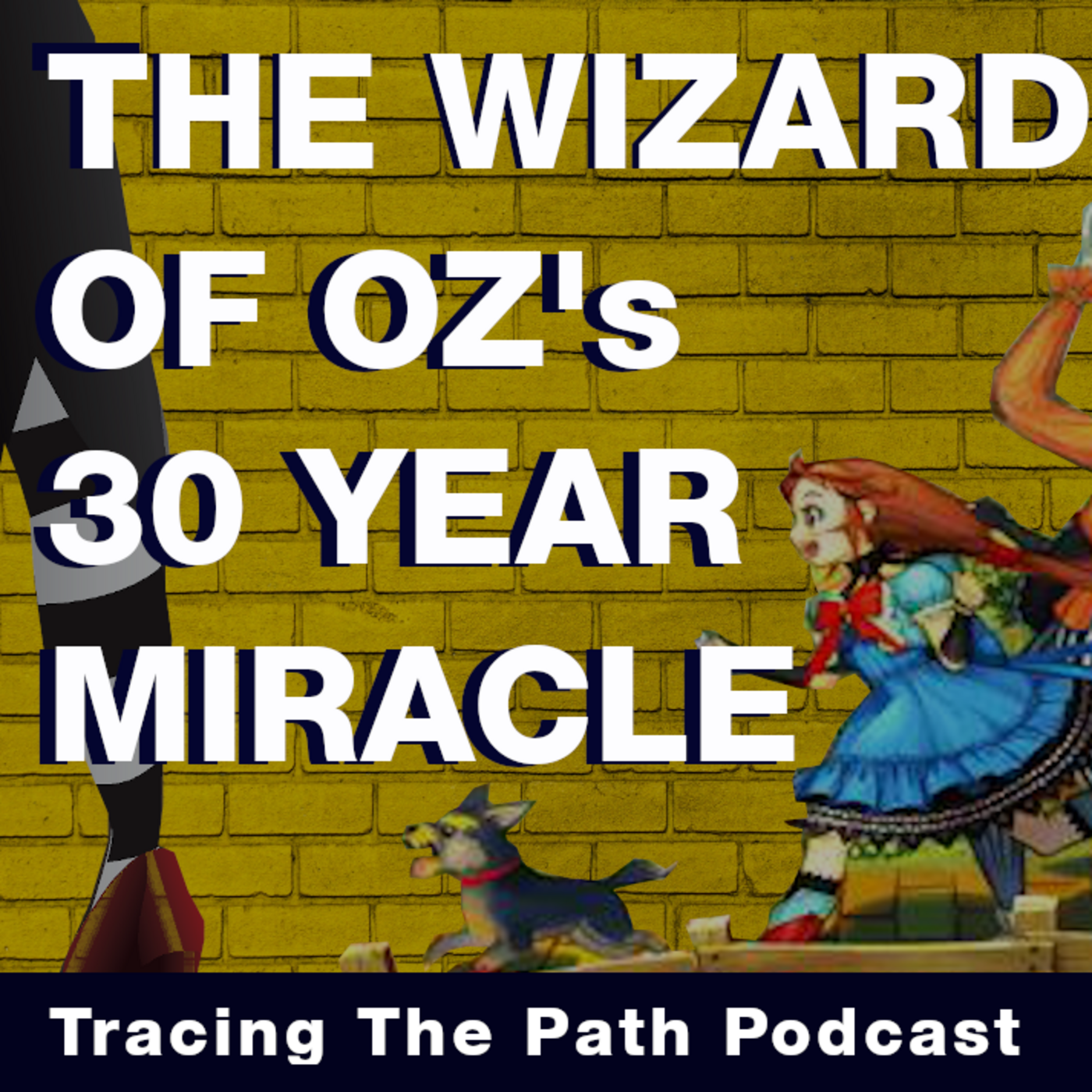 |
The Wizard of Oz’s 30 Year Miracle Beyond every American watching the Wizard Of Oz, this story has ties to Frank Lloyd Wright. |
SEE THE BIBLIOGRAPHY
SUBSCRIBE AND LISTEN (FOR FREE!)
RATINGS & REVIEWS
If you enjoy this podcast, please give it a rating and review.Positive ratings and reviews help bring Tracing The Path to the attention of other history lovers who may not be aware of our show.



